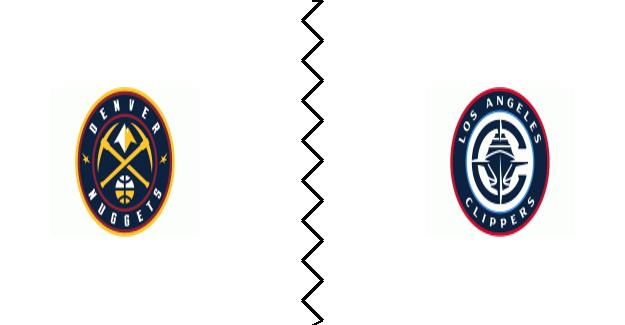Offensive Overview
The Denver Nuggets showcase an offense predicated on ball movement and player involvement, demonstrated by their regular season assist percentage of 68.3. The Clippers, while still effective, feature a slightly less team-oriented offensive approach, with an assist percentage of 60.5. During the regular season, Denver also secured a higher offensive rebounding percentage at 26.7 compared to the Clippers' 24.4, which indicates a greater commitment to second-chance opportunities. However, Denver also turned the ball over more often at 12.4 compared to the Clippers' 13.4 turnover percentage. Their true shooting percentage was 0.604 during the regular season, while playoff true shooting percentage has fallen to 0.53. The Clippers play a more controlled tempo compared to the Nuggets, who push the pace more consistently.
Defensive Assessment
The Los Angeles Clippers exhibit a formidable defensive presence on the defensive glass, securing 77.5% of defensive rebounds. Meanwhile, Denver's defensive rebounding percentage stands at 74.6. The Clippers force a higher opponent turnover percentage of 14.0 compared to Denver's 11.3, suggesting a more disruptive defensive scheme. Opponent assist percentage is higher against the Nuggets at 66.9, while the Clippers hold opponents to 65.0.
Playoff Performance Nuances
Examining playoff-specific metrics reveals further insights into each team's adjustments and effectiveness under pressure. Denver's offensive rebounding percentage increases to 29.5 in the playoffs. However, their assist percentage falls to 61.5 and their turnover percentage increases to 14.4, indicating more errors during their playoff motion. For the Clippers, their playoff defensive rebounding percentage diminishes to 70.5. Their defensive prowess increases as opponents commit more turnovers, standing at 14.6 percent. Nuggets opponents assist percentage goes down from 66.9 to 60.5.
Matchup Dynamics and Strategic Implications
Denver's regular season three-point percentage of 0.376 presents a challenge against the Clippers' three-point defense, which allows opponents to shoot 0.35 from beyond the arc. Denver's three-point shooting has suffered during the playoffs as they are shooting 0.353 from three. Conversely, the Clippers' ability to draw fouls, reflected in their free throw percentage of 0.797, could be tested by Denver's defense, which conceded a free throw percentage of 0.777 to opponents during the regular season. The Clippers three-point defense has shown to be less effective during the playoffs, with opponents shooting 0.353 from three. Denver's improved offensive rebounding during the playoffs will require a greater effort on the glass from the Clippers to limit second-chance opportunities. The Nuggets' improved steal percentage of 8.6 will test the Clippers ball movement. The Clippers, who are blocking shots at a rate of 11.5 percent, are stifling opponents ability to score in the paint more often.
Pace and Game Flow Predictions
The Nuggets have a higher pace at 99.8 compared to the Clippers' 97.5 during the regular season, suggesting a difference in preferred tempo. Denver will attempt to speed the game up and leverage their transition offense, while the Clippers will try to control the pace and execute in the half-court. If the Clippers are successful at controlling the game, Denver's playoff turnover percentage will become a burden.
Final Analysis and Prediction
The Los Angeles Clippers' ability to limit Denver's second-chance points and control the game's tempo will be pivotal. Although the Nuggets boast a more fluid offense, the Clippers' stingier defense and ability to capitalize on turnovers will allow them to be more effective at scoring. The Clippers' defense will contain the Nuggets offense enough to secure the win.
Predicted Score: Denver 103, L.A. Clippers 113





